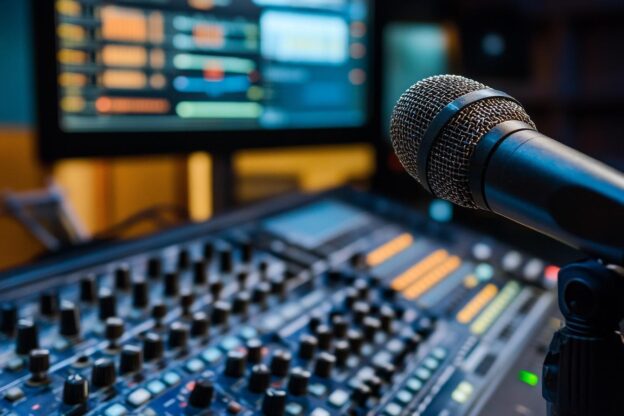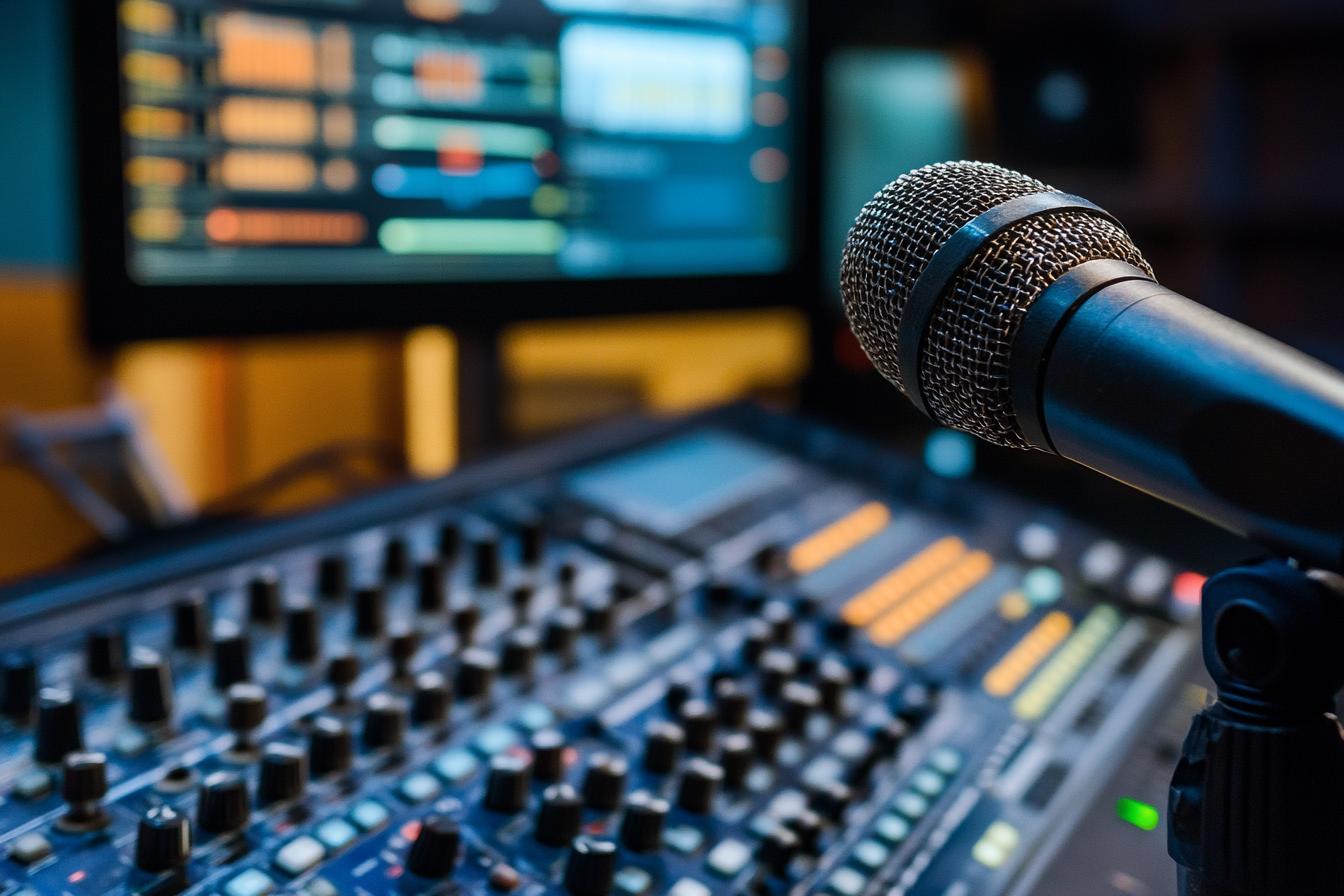Radio news, a staple of many a morning commute or evening drive, provides more than just headlines and current events. It serves as a vital source of information, a calming voice in times of uncertainty, and a connection point for communities. The accessibility of radio, with its ability to reach diverse audiences across geographical boundaries, makes it a potent tool for disseminating critical information. Imagine, for instance, a natural disaster strikes a remote area. Radio broadcasts become a lifeline, offering crucial updates on evacuation procedures, safety measures, and available resources. The human voice, imbued with empathy and urgency, adds a layer of comfort and reassurance, reminding listeners that they are not alone.
Beyond immediate news, radio nourishes our understanding of the world. It allows us to delve deeper into complex issues, exploring different perspectives and fostering informed debate. Through insightful interviews, expert analysis, and engaging discussions, radio news expands our horizons and encourages critical thinking. The intimate nature of radio, with its ability to create a sense of shared experience, can spark conversations and inspire action within communities. Think of a local radio station hosting a forum on climate change. By bringing together experts, community members, and policymakers, it fosters a dialogue that can lead to meaningful solutions and create a ripple effect of positive change.

Radio News Nourishing
1. Radio News Nourishing
Radio news has always been a vital source of information, keeping listeners informed about current events, local happenings, and global issues. It’s a medium that offers a unique and intimate connection with the news, allowing listeners to stay informed while going about their daily lives. The immediacy of radio news, combined with the engaging voices of presenters, ensures that information is delivered in a timely and accessible manner, fostering a sense of connection and shared understanding within a community.
Beyond simply delivering facts, radio news can also play a crucial role in shaping public opinion and sparking important conversations. By providing diverse perspectives and in-depth analysis of complex issues, radio news helps listeners to develop their own informed opinions and engage in meaningful discussions with others. The power of radio to connect with audiences on a personal level makes it a powerful tool for promoting civic engagement and fostering a more informed and engaged society.
2. Informative Radio Content
Informative radio content aims to educate listeners on a specific topic or issue. It can be a deep dive into a current event, a breakdown of complex scientific concepts, or an exploration of historical moments. Think of it as a conversation with a knowledgeable friend who breaks down information in an easy-to-understand way, using relatable examples and clear explanations. This type of content thrives on clarity and conciseness, ensuring that listeners grasp the key points and walk away with a newfound understanding.
What sets informative radio content apart is its ability to engage listeners on a deeper level. Instead of simply delivering facts, it seeks to spark curiosity and encourage critical thinking. By presenting information in a compelling and engaging manner, informative radio content transforms a passive listening experience into an active learning opportunity. This type of content can be found in various formats, from news segments and documentaries to educational programs and podcasts, all sharing the common goal of enriching listeners’ knowledge and understanding.
3. Engaging News Delivery
Radio news thrives on capturing listeners’ attention and keeping them engaged. This means more than just delivering facts; it’s about weaving a compelling narrative that resonates with the audience. Think of it as storytelling, but with real-world events as the backdrop. You can achieve this through dynamic voices, vivid descriptions, and a conversational tone that invites listeners to feel like they’re part of the story. By incorporating sound effects and music, you can further immerse listeners in the experience, making the news more memorable and impactful.
The key to captivating listeners is to tailor your delivery to the specific news story. If it’s a serious topic, your voice should reflect the gravity of the situation. For lighter news, you can inject humor or a touch of playfulness. Ultimately, the goal is to connect with your audience on an emotional level, sparking their curiosity and making them want to hear more. This approach not only makes the news more enjoyable, but it also helps listeners better understand the world around them.
4. Building Community Awareness
Radio news plays a vital role in fostering community awareness. By delivering timely and accurate information, radio stations connect residents to their surroundings. They highlight local events, initiatives, and concerns, bringing people together and encouraging participation. Radio stations can share stories of community heroes, showcase local businesses, and promote neighborhood gatherings, creating a sense of shared identity and purpose.
Furthermore, radio news can facilitate dialogue and understanding between community members. By providing a platform for diverse perspectives, radio stations can promote open discussions and encourage constructive solutions to local challenges. They can also offer valuable insights into community issues, empowering residents to make informed decisions and contribute to their neighborhoods’ well-being. Radio news serves as a vital link, connecting individuals and fostering a more engaged and informed community.
5. Promoting Critical Thinking
Radio news plays a vital role in keeping us informed, but it’s equally important to develop critical thinking skills to navigate the information landscape. By actively questioning information, examining sources, and considering multiple perspectives, we can become more discerning consumers of news. This process involves asking key questions like, “What evidence supports this claim?” or “What are the potential biases of the source?” This critical engagement helps us identify potential misinformation or manipulation and form well-informed opinions.
Radio news can be a powerful tool for fostering critical thinking. By presenting diverse viewpoints, analyzing current events, and encouraging open dialogue, radio programs can challenge listeners to engage with complex issues and formulate their own conclusions. This process not only strengthens our ability to evaluate information but also enhances our understanding of the world around us. By embracing critical thinking, we can become more engaged and informed citizens, capable of making responsible decisions based on a solid understanding of the facts.
Conclusions
So, there you have it! Radio news is more than just a way to stay updated on current events. It’s a powerful tool that can nourish your mind, inform you on important topics, and keep you entertained with engaging delivery. And let’s not forget the community aspect! Radio brings people together, helping us understand each other’s perspectives and build a stronger sense of belonging. Plus, it encourages us to think critically about the world around us. So, next time you hear that familiar radio jingle, tune in and see what’s happening in your world – you might just learn something new, connect with your community, and maybe even spark a thought or two!


















